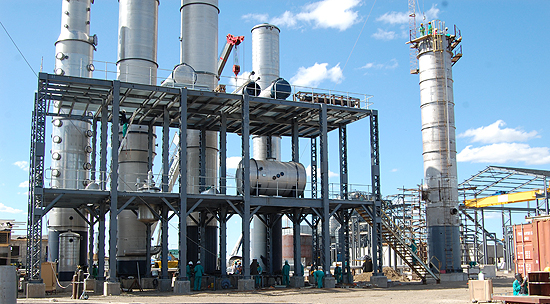Editorial Comment: Future is green, E15 will boost economy

The move to increase ethanol content of our petrol to 15 percent makes excellent sense economically and for almost all cars and light commercial vehicles should give no serious problems considering Zimbabwe’s altitude, although several car manufacturers warn against the change on corrosion grounds and there is a lot of understandable nervousness among many drivers.
The reasons for the change are obvious. Zimbabwe has to cut its imports or boost its exports if we are to make any progress at all. It does not matter that we are now using the US dollar as our currency; the books still need to balance or all we are doing is exporting our savings and stripping the country of assets. Cutting our petrol imports by another 5 percent is a big help in moving towards this balance.
Secondly, we create wealth and jobs in Zimbabwe. The ethanol does not emerge from nowhere. It comes from sugar cane grown by Zimbabwean families in the Lowveld. The more of this cane we use the more money is earned by these farmers and the more jobs they create, directly and indirectly. Importing petrol does nothing for Zimbabwe.
The third reason is important, although perhaps will not impress many Zimbabweans. Ethanol from cane is an extremely efficient way of reducing net carbon emissions. Like other fuels it burns to carbon dioxide and water, but the cane absorbs a lot of this carbon dioxide as a new crop is grown. Our Chisumbanje plant also uses the cane residue as the main energy source, even managing to generate surplus electricity, which again in effect recycles carbon. It has been estimated that almost 90 percent of the carbon emitted by burning ethanol returns to the new crop.
But there is a downside. E10, the 10 percent blend, is now considered safe in all cars, although it was a major battle against very strong lobbies before that scientific conclusion was accepted around the world. Many countries, including at least five US states, now enforce laws that petrol must be blended to at least E10.
The shift to 15 percent is being resisted. Car manufacturers do not like it although a serious study by the US Environmental Protection Agency found that all cars built since 2001 could use it without harm. However, warranties by some manufacturers on new cars are invalid if more than E10 is used.
The objections centre on possible increased corrosion of parts, especially aluminium parts, harder cold starting (although this is not a Zimbabwean problem) and increased danger of clogging fuel filters.
The higher octane level is again not much of a problem in Zimbabwe, but could be one on the coast. All these are for unmodified cars.
In the 1980s, Zimbabwe used blends as high as 20 percent ethanol, although then this was hydrous ethanol, that is ethanol that was up to 4.9 percent water, rather than the anhydrous ethanol (less than 1 percent water) we use now.
There is a growing body of research that suggests a small amount of water in the ethanol reduces dangers of corrosion significantly and can in fact repair some corrosion. This so impressed the Dutch authorities, that they only allow hE15, that is ethanol with almost 5 percent water rather than E15.
The major difficulty is that outside Brazil, where ethanol blends are old hat and all cars have been built to cope with the standard E22 mix, Thailand where modestly modified cars are using E20 and the special flexi-fuel engines developed to cope with much higher blends, there is a lack of data on long-term use in ordinary cars.
We assume the Zimbabwe Energy Regulatory Authority studied what research is available. But we would be happier if some independent scientists and engineers looked over Zera’s findings; the University of Zimbabwe appears to be a source of such talent.
The benefits of E15 are high, but the doubts exist. Delaying the jump from the established E10 for a month for a second look will not be that drastic and if, as is likely considering that independent US study, a second assessment comes to the same conclusion as Zera then a lot of worries cease.
Few of us are equipped to tell if Zera is right and we would like to know in advance how many objections arise from ignorance and people trapped in the past, and how many have some substance.









Comments